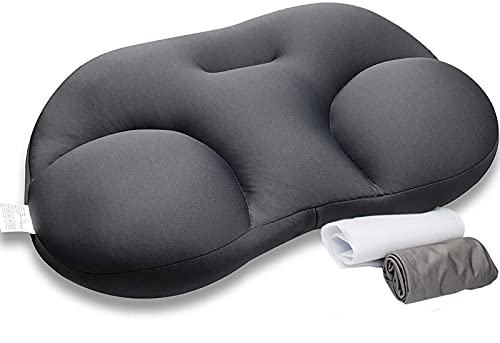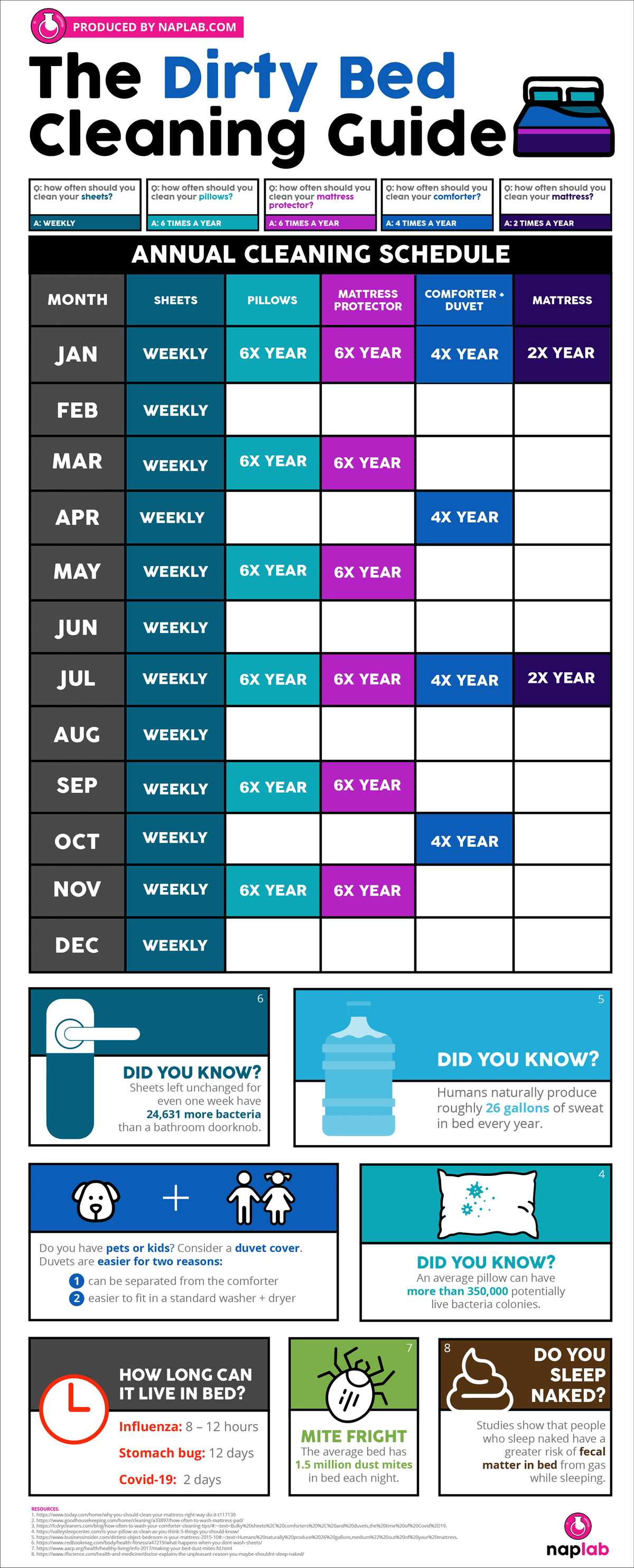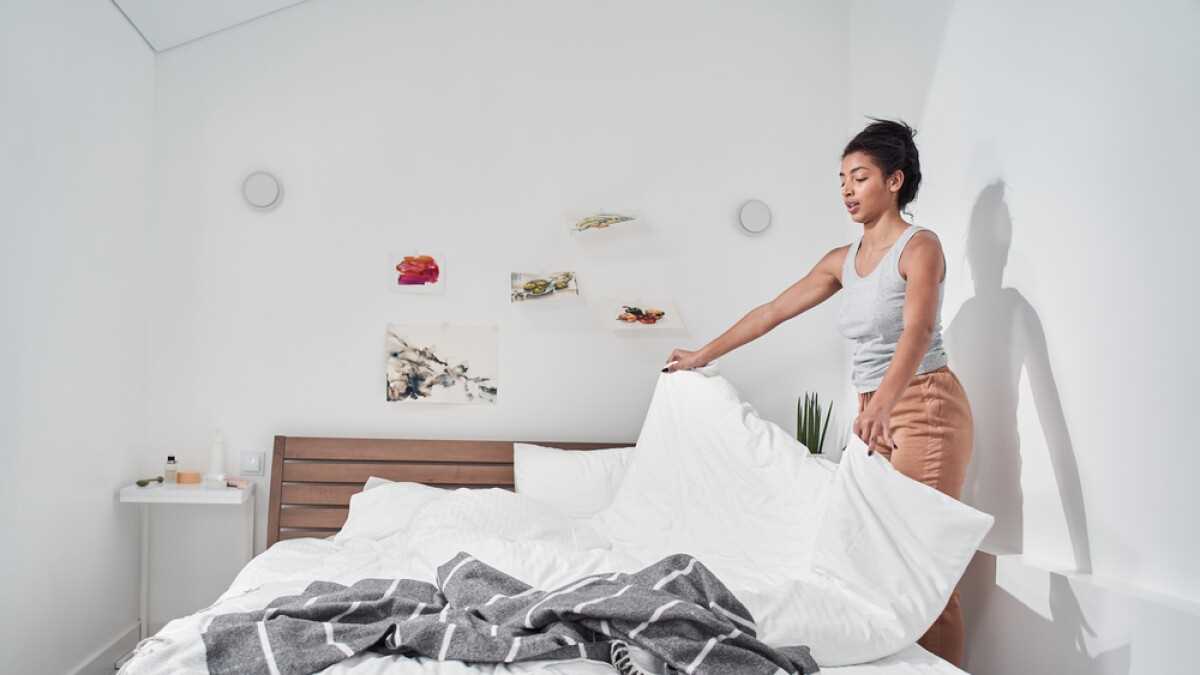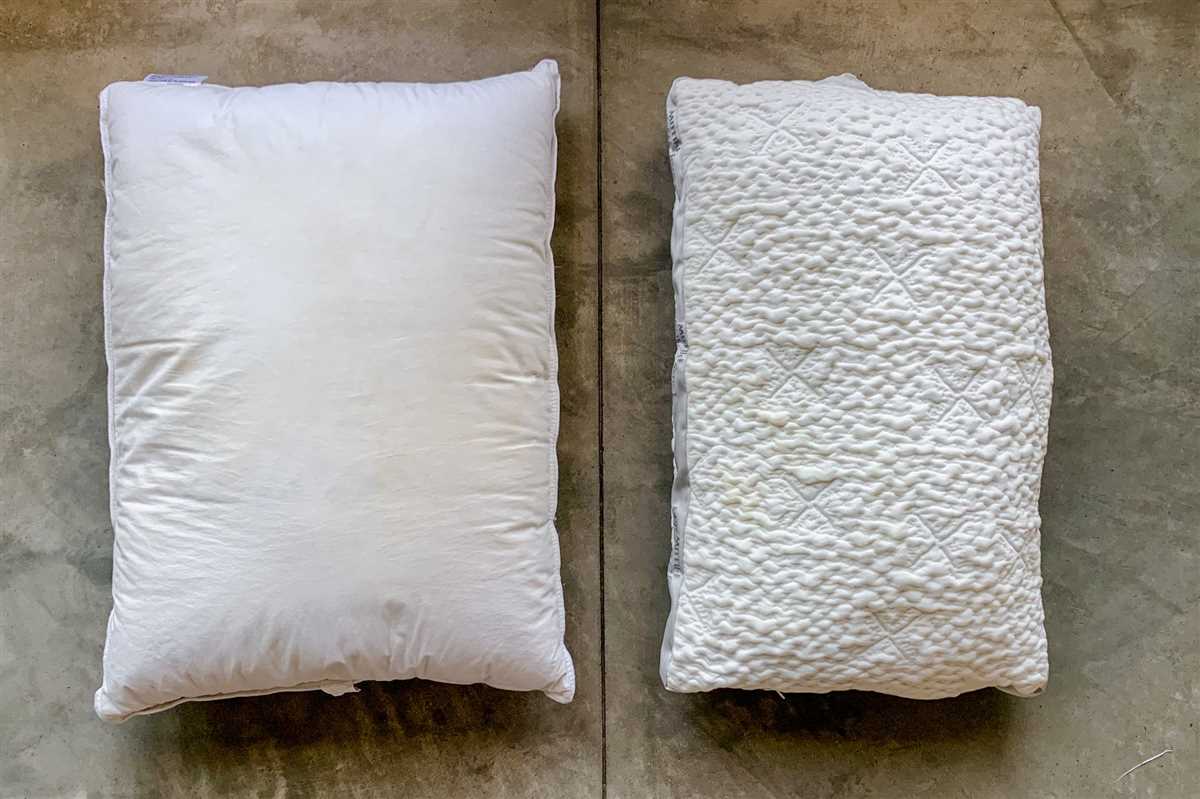




When it comes to maintaining a clean and hygienic bedroom, washing your pillowcases regularly is essential. Pillowcases can easily accumulate dirt, sweat, oil, and dead skin cells, which can lead to a build-up of dust mites and bacteria. This can not only affect the quality of your sleep but also contribute to allergies and skin irritations.
So, how often should you wash your pillowcases? Well, experts recommend washing them at least once a week. However, if you have allergies or oily skin, you may need to wash them more frequently. It’s also important to note that pillowcases should be changed more often if you’re sick or have been using skincare products that can transfer to the fabric.
To ensure that your pillowcases are thoroughly cleaned, it’s best to wash them in hot water with a good quality detergent. Hot water can help kill any bacteria or dust mites present. Additionally, using a hypoallergenic detergent can be beneficial for those with allergies or sensitive skin.
Remember, pillowcases are not the only part of your pillows that need cleaning. It’s essential to regularly wash or air out your pillows as well to keep them fresh and hygienic. By following these simple guidelines, you can maintain a clean and healthy sleeping environment.
Importance of Keeping Pillowcases Clean
Keeping your pillowcases clean is essential for maintaining good hygiene and promoting a healthy sleep environment. Here are a few reasons why it’s important to regularly wash your pillowcases:
1. Eliminating Dirt and Oil

- Pillowcases collect dirt, oil, and sweat from your skin.
- Regularly washing them removes these impurities, ensuring a clean and fresh pillow surface.
2. Preventing Acne Breakouts
- Dirty pillowcases can harbor bacteria that contribute to acne breakouts.
- By keeping your pillowcases clean, you can reduce the risk of developing acne and promote clearer skin.
3. Managing Allergens
- Pillowcases can accumulate allergens such as dust mites, pollen, and pet dander.
- Regular washing removes these allergens, helping to alleviate allergies and improve overall respiratory health.
4. Extending Pillow Lifespan

- A clean pillowcase helps to prevent the build-up of dirt and oils on the pillow itself.
- By keeping your pillowcases clean, you can extend the lifespan of your pillows and save money in the long run.
5. Enhancing Sleep Quality
- A clean and fresh pillowcase provides a more comfortable sleep surface.
- By maintaining cleanliness, you can ensure a more relaxing and restful night’s sleep.
Overall, regularly washing your pillowcases is crucial for your health and well-being. It helps to keep your pillows clean, reduces the risk of acne breakouts, manages allergens, extends pillow lifespan, and enhances your sleep quality. Make it a habit to wash your pillowcases at least once a week to maintain a clean and healthy sleep environment!
Factors that Affect Pillowcase Washing Frequency
- Personal Hygiene: The frequency at which you wash your pillowcases may depend on your personal hygiene habits. If you shower before bed every night and have clean hair, your pillowcase may not collect as much dirt, oil, or sweat, allowing you to wash it less frequently. On the other hand, if you sweat a lot during the night, have oily skin, or use hair products that transfer onto your pillow, you may want to wash your pillowcases more often.
- Allergies: People who suffer from allergies may need to wash their pillowcases more frequently. Dust mites, pollen, and other allergens can accumulate on your pillowcase, leading to a higher chance of allergy symptoms. Washing your pillowcases at least once a week can help reduce the build-up of allergens and provide relief for allergy sufferers.
- Acne-prone skin: If you have acne-prone skin, washing your pillowcases regularly is important. Pillowcases can collect bacteria, oils, and dead skin cells from your face. These can then transfer back onto your skin when you sleep, potentially worsening acne breakouts. It is recommended to wash your pillowcases at least two to three times a week if you have acne-prone skin.
- Sweating: If you are a heavy sweater or live in a hot and humid climate, your pillowcases may become dirtier and more stained faster. Sweat can seep into the fabric of your pillowcase, leaving it smelling unpleasant and potentially causing yellow stains. In these cases, washing your pillowcases once or twice a week can help maintain their cleanliness and freshness.
- Pets: If you have pets that sleep on your bed, their fur, dander, and saliva can transfer onto your pillowcases. This can lead to an accumulation of allergens and unpleasant odors. Washing your pillowcases at least once a week can help remove any pet-related debris and keep your bedding clean.
- Makeup: If you wear makeup to bed or use skincare products that may transfer onto your pillowcase, it’s important to wash it more frequently. Makeup can stain your pillowcase and lead to the growth of bacteria. Aim to wash your pillowcases every two to three days if you regularly wear makeup or use skincare products before sleep.
Recommended Washing Frequency for Pillowcases
Keeping your pillowcases clean is important for maintaining good hygiene and promoting a restful sleep. Here are some guidelines on how often you should wash your pillowcases:
- Every week: It is recommended to wash your pillowcases at least once a week. This helps to remove dirt, oils, and sweat that can accumulate on the fabric.
- More often if needed: If you have allergies, acne-prone skin, or sweat excessively during sleep, you may want to consider washing your pillowcases more often. This can help to prevent the buildup of allergens, bacteria, and oils that can irritate your skin or worsen your allergies.
- Consider pillow protectors: Using pillow protectors can help to extend the time between washings for your pillowcases. These protective covers can be easily removed and washed, providing an additional barrier against sweat, oils, and allergens.
- Regularly review pillow condition: It’s also important to regularly evaluate the condition of your pillows. If they start to smell or show signs of stains or discoloration, it’s a good idea to wash the pillowcases more frequently.
By following these recommended washing frequencies, you can ensure that your pillowcases stay clean, fresh, and comfortable for a good night’s sleep.
Tips for Washing Pillowcases
- Follow the care instructions: Before washing your pillowcases, check the care instructions on the label. Different materials may require different washing methods, so it’s important to follow the recommended instructions to avoid damaging the fabric.
- Wash pillowcases separately: It’s best to wash your pillowcases separately from other items to prevent them from getting tangled or catching on zippers or buttons. This will also help ensure a more thorough clean.
- Use a gentle or delicate cycle: To protect the fabric and maintain the quality of your pillowcases, choose a gentle or delicate cycle on your washing machine. This will help prevent excessive agitation and reduce the risk of damage.
- Use a mild detergent: Opt for a mild detergent that is suitable for your pillowcase fabric. Harsh detergents can cause fading, shrinking, or damage to the fabric over time. Avoid using bleach on colored pillowcases, as it can cause discoloration.
- Wash in lukewarm water: Use lukewarm water instead of hot water, as high temperatures can weaken the fabric and lead to shrinkage. This is especially important for pillowcases made of delicate materials like silk.
- Avoid overloading the washing machine: Overloading the washing machine can prevent the pillowcases from getting properly cleaned and rinsed. Be sure to leave enough space for water and detergent to circulate freely around the fabric.
- Pre-treat stains if necessary: If your pillowcases have any stains, pre-treat them before washing. Follow the instructions on the stain remover product and gently rub the stained area with a soft brush or cloth.
- Avoid using fabric softener: Fabric softener can leave a residue on pillowcases, making them less absorbent and reducing their lifespan. It’s best to skip fabric softener when washing your pillowcases.
- Hang or lay flat to dry: After washing, carefully remove the pillowcases from the machine and shake them out to reduce wrinkling. Hang them up or lay them flat to air dry. Avoid using a dryer, as the heat can shrink or damage the fabric.
- Iron if needed: If your pillowcases are wrinkled after drying, you can iron them on a low heat setting. Be sure to check the fabric care instructions, as some materials may not be suitable for ironing.
Signs that It’s Time to Replace Your Pillowcases
Pillowcases are an essential part of keeping your pillows clean and comfortable. Over time, pillowcases can become worn out, stained, or harboring allergens and dirt. Here are some signs that it’s time to replace your pillowcases:
1. Visible Stains

If you notice visible stains on your pillowcases that cannot be easily removed or washed out, it’s a clear sign that it’s time to replace them. Stains can be caused by sweat, oils from your hair and skin, makeup, or spills. Not only are stains unsightly, but they can also harbor bacteria and allergens.
2. Fading or Discoloration
Pillowcases that have faded or become discolored over time can make your bedding look dull and worn out. If you’ve tried various stain-removal methods and the discoloration remains, it’s a good indication that it’s time to invest in new pillowcases.
3. Rough Texture
Over time, pillowcases can lose their softness and develop a rough texture. If you find that your pillowcases feel rough against your skin or irritate you during sleep, it’s a sign that they have worn out and need to be replaced.
4. Allergy Symptoms
If you notice that you’re frequently experiencing allergy symptoms, such as sneezing, itching, or a runny nose, it could be due to allergens trapped in your pillowcases. Allergens such as dust mites, pollen, and pet dander can accumulate over time and cause discomfort. Replacing your pillowcases can help alleviate these allergy symptoms.
5. Persistent Odors
If your pillowcases have developed persistent odors that cannot be eliminated through washing, it’s a clear indication that they need to be replaced. Odors can be caused by sweat, body oils, hair products, or spills, and can be difficult to fully remove once they’ve set into the fabric.
6. Elasticity Loss

If your pillowcases have elastic bands or fitted corners, check if they have lost their elasticity. If the elastic no longer holds the pillowcase securely in place, it’s a sign that the pillowcase is worn out and needs to be replaced.
7. Irreparable Damage
If your pillowcases have any rips, holes, or other irreparable damages that cannot be fixed, it’s time to replace them. Damaged pillowcases not only look unsightly but can also allow dirt and allergens to penetrate the fabric and affect the cleanliness of your pillows.
To keep your pillows clean and hygienic, it’s recommended to replace your pillowcases at least every six months or more frequently if you notice any of these signs. Regularly washing and replacing your pillowcases will help extend the life of your pillows and ensure a better night’s sleep.
FAQ
How often should I wash my pillowcases?
It is recommended to wash your pillowcases every one to two weeks. This helps to remove sweat, oils, and dirt that build up on the pillowcase over time.
What happens if I don’t wash my pillowcases regularly?
If you don’t wash your pillowcases regularly, they can become a breeding ground for bacteria, dust mites, and allergens. This can lead to skin irritations, allergies, and an unpleasant odor.
Can I wash my pillowcases with other laundry?
Yes, you can wash your pillowcases with other laundry as long as you separate them by color. It is recommended to wash them with similar fabrics and colors to prevent color bleeding or damage to the pillowcase.
Should I wash my pillowcases in hot water?
It is recommended to wash your pillowcases in hot water, as it helps to kill bacteria, dust mites, and allergens. However, make sure to check the care instructions on the pillowcase label, as some fabrics may require a different water temperature.
How should I dry my pillowcases?
You can dry your pillowcases in a dryer on a low or medium heat setting. This helps to prevent shrinkage and maintain the quality of the fabric. Alternatively, you can air dry them by hanging them up or laying them flat.
How often should I wash my pillowcases?
It is recommended to wash your pillowcases at least once a week to maintain cleanliness and remove any dirt or oils that may have accumulated.













